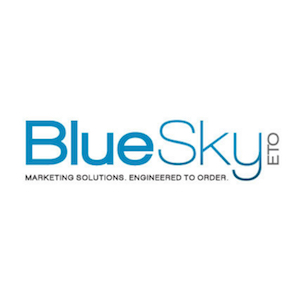High-quality products and services are a critical component of any successful business. But quality is not the only thing that drives sales. Your approach to sales can make a substantial difference in how customers perceive you, and whether or not they want to keep coming back for more. Consumer engagement is your bread and butter for creating repeat customers who are brand loyal. Looking to improve your customer engagement strategy? You’ve come to the right place.
The Foundations of Consumer Engagement
Excellent service is the keystone to building a positive relationship with customers that will increase their trust in your brand. We know they are crucial since about 86% of consumers would say that their loyalty is driven by brand likeability, and 83% say trust.
So how does a brand stay likable and trustworthy? Quality, service, and shopping experience make up three areas to focus on when it comes to engaging customers.
1. Seek First to Understand: Consumer Engagement in Practice

When crafting messages for your target market or working to resolve an unhappy customer’s issue, it is both important and strategic to allow the other party to clearly state their needs in their own words. Listen with a non-judgemental mindset and try and put yourself in their shoes. How would you feel if you were in their position? How would you advise someone close to you to proceed if they were in the same predicament?
The Power of Active Listening
When someone has a complaint, hearing them out and giving them the benefit of the doubt will make them feel supported. Additionally, you will learn the nature of their real problem with your products or services. You are likely to hear a bit of venting (think of it like venting the steam—sometimes you need to let the steam dissipate before you see what’s happening in the pot).
Armed with this information, you will be able to appropriately and professionally address the specific issue. Be on the lookout for patterns or trends in your customer feedback. Handling complaints can help you learn about systemic barriers to your consumer engagement strategy that you might have otherwise overlooked.
2. Relationships Are Built on Reliability
Do what you say you’re going to do when you say you’re going to do it. Remember to “promise less than you can deliver.” This is, of course, within reason. You don’t need to exaggerate your delivery time to 30 days, but if you can get their item to their door in 4 days, 
When things break, fix them. Whether this is your website, a chair you built or a shirt which has come unstitched, you have an opportunity to prove that you are focused on the satisfaction of your customers above all else, and you jump at the chance to improve situations that don’t go as planned.
Set clear expectations and establish your reliability as soon as possible. One easy way to accomplish both is to create automated email responses for your website. Something as simple as an email alerting a customer that their message has been received and will be replied to within 48 hours can help establish (or begin rebuilding) trust.
3. Improving Customer Engagement Through Gratitude
When you take the time to express your appreciation for anyone in your life, your relationship is strengthened. Customer appreciation is critical, since you are only in business because of your customers. Showing your gratitude can go a long way in creating a positive relationship which leads to more trust and higher sales.
While customer engagement can take a multitude of forms, not all of these approaches will work for every business model. Pick a few to try out and use your results to determine your most effective approach moving forward.
3 Ways to Strengthen Your Customer Engagement Strategy
1. Delight With Details
Remember a detail about a customer and ask about it when you see them. If someone comes into your shop with an interesting hat or new handbag, engage them by asking where they got it or saying you like their style. If you know someone was going to have a child, complete a degree, or finish painting their bathroom, ask them how it’s going! The feeling that we get when someone remembers a detail about our lives really creates a personal connection.
2. Send a Personal Email
A simple email can make a big impression. Send a quick message letting a customer or client know about a new feature, or ask about their specific needs and preferences, in order to make better suggestions on things they might like. This will make them feel like they are getting a personalized experience.
3. Deliver a Handwritten Note
A handwritten card is a great, unique way to forge a personal connection. It’s a gesture of thoughtfulness that will help bolster your relationship with your customer or client.
Tailor Made Interactions for Customer Engagement
Impersonal experiences can give consumers a negative impression of a brand. But when you peruse a store and a clerk offers to find you coordinating items for that pair of jeans you’re buying, it makes the sales process about what customer wants to buy, instead of what the business wants to sell. Of course, we all want to sell as much as possible to every customer, but by highlighting a limited amount of related items or services, you actually make people feel understood.
A Primer for Personalization
When you talk to your friends, you tailor your conversation to the things you have in common. You also go out of your way to ask about other aspects of their life because you truly care about them. Looking at your customers as friends in this sense can benefit your marketing strategy by offering in-depth analysis of what these customers like, what their shopping habits are, and what is it that brought them to you.
1. Pay attention to what your customers ignore, look at, and ultimately purchase. Buy something from Amazon.com, and the confirmation page offers several suggestions that could potentially pair with your new purchase. When considering buying my son a guinea pig, I searched for some basic supplies to get an idea of how much it would take to maintain said guinea pig. Amazon persists in using their ad space in all my internet travel to remind me of all the amazing guinea-pig friendly toys, food, and accessories that I could give to my gleeful son to present to his guinea pig. And you know what happened? I bought the guinea pig a new woven ‘den’ to hang out in.
Both of them love it. Which means I am happy watching them enjoy this purchase, they are happy using it, and Amazon is happy having made an extra sale just by following up on something I searched for.
Related: 5 Lead Nurturing Campaign Strategies Every Marketer Should Follow

3. Monitor response rates and engagement in order to ascertain if you are moving in the right direction. Take the temperature so that you know that your campaign dollars are being put to their best use and to ensure you are maximizing consumer engagement. Ask how they heard about you and how their experience was.
Always make the ask and response options simple and quick. A pop-up question after a purchase, with one answer to click, or a clerk asking what brought them in today can give you valuable information about where they found you and why they are there. This information is integral to crafting your marketing strategy.
Recommended Read: The World of QR Codes is Changing: Can Your Marketing Keep Up?
4. Conduct more detailed surveys. Longer surveys can be beneficial as well, but customers should have the option to either complete them or not, since they require a time commitment. Keep in mind, since you have customers self-selecting for this activity, your results may reflect specific experiences instead of general ones. Be mindful of this as you incorporate this data into your plan.
5. Move beyond personalization tokens. Addressing an email or direct mail piece using a customer’s first name or business is a great start. However, thanks to advances in variable data printing it’s easy to take personalization to the next level. Deliver different images, messages, offers, or even complete designs to customers based on segmentation you choose. Customers have come to expect a tailored experience, and this is one solid way to continually deliver.
Leverage the Power of Variable Data Printing
Customer Engagement Strategies: Keep the Conversation Going
Getting in touch and staying in touch are keys to a sustained and efficient customer engagement strategy. When it comes to lead nurturing, absence does not make the heart grow fonder. We live in a world of endless possibilities. It takes a lot to get our attention let alone keep it. These strategies can help:
1. Start with a personal hello. Whether that is in-person with a greeter, via social media like Instagram, or with a billboard to direct people to your restaurant, the first step to engaging a customer is letting them know you exist. Stores like Wal-Mart are famous for their cheerful greeters. Baristas that learn a customer’s regular order and can start preparing it when they see their customer walk in the door are anticipating needs and recalling individual details about a person. That individualized attention makes people feel special and will reinforce positive feelings.
2. Surprise with unexpected savings. Deals can be another great way to engage with your customer base. A flash sale is a reason to reach out with an attention-grabbing graphic on social media or by email. When alerting your customers to current savings, you show that you care about their bottom line too.
Related: Creative Marketing Strategies AND Brand Compliance: How to Have It All

4. Cater to customers with personalized suggestions. Personal recommendations can deepen a customer relationship. These suggestions are seen as helpful to many. According to statistics compiled by Fresh Relevance, 84% of consumers will take action when they get a personalized recommendation.
Participation: The Key to Consumer Engagement Success
When it comes to your bottom line, having a solid customer engagement strategy and marketing plan can help you focus your efforts. Using data and feedback, you can tailor your strategy. Throw out what doesn’t work, and continue to innovate. Have a regular schedule for contact, but don’t overwhelm. Take a look at standards for your industry, compare them to your results, and make adjustments as needed.
There is no one perfect strategy for consumer engagement, but there are myriad ways to engage customers and measure customer satisfaction. Want updated strategies delivered straight to your Inbox? Subscribe to the Brand Management Blog.
How to Create Brand Awareness for Your Business
How familiar is your target audience with your brand? Do your customers easily recognize your company? Does your business have distinctive qualities that people relate to?These are the traits that define strong brand awareness. Amazon has it. They're the most valuable...
How to Share Marketing Materials for Your Luxury Brand
With your luxury brand, the focus is on the superior quality of your product or service. But you'll also need luxury marketing materials to accurately promote them. Whether you're a distributed marketer, a marketing agency, a franchise, or a brand marketer/manager...
Loyalty and Luxury: Marketing Strategies of Premium Retail Brands
How do you sell a state of mind? Every day, luxury marketing experts ask themselves this question. While they may be stocking sports cars or skincare, what they're really selling is a lifestyle—and plenty of us are buying in. Affluent consumers comprise 20% of U.S....








I like companies that offer rewards programs. I would choose them over a company that does not. Customer Appreciation Days are a great way to thank your customers. If you can’t keep up with your customers, then you have no business. This is a must-read for all business owners.
Very informative piece of article. Surely, i would recommend it to others.
Thank you for sharing. The customer plays an important role in every business. Business goes well if a customer engagement is there and also treated well. Keep posting:)
Customers are the thing that makes your business boom or not. You need to listen to both positive and negative feedback and play an active role in making sure that everyone can be heard.
I love handwritten notes. It shows how much a company values you. Colorpop does that sometimes.
I think many of us forget the value of personalization. It’s all about treating your customers as you’d like to be treated.
It’s SO important to make that connection with your customers! I think they prefer good customer service over anything else. That has been my experience in the past!
Yes these are such great tips! Customers are so important to the livelihood of a business so keeping them happy should be the #1 priority.
customer engagement is so important, whether you are a business or a blogger! You need to treat them right and also show them they are important to you!
As I work in customer services all of this points are so relevant to me and I can apply all of them to my day to day job. Thank you for such an informative post!
http://www.nmdiaries.com
All your tips were right on the spot. I have definitely gone somewhere different if I feel like I wasn’t listened to. Its just those little things that count to a customer.
Such an amazing post. Filled with great tips and important information. Thanks!
Thank you for such an informative post! I’m sure a lot will benefit from it. Proper customer engagement is helpfulin daily life even if you don’t sell anything!
I agree that we should never overlook the power of active listening. It can help us determine how we can establish ourselves in a customers eyes, it demonstrates how we can solve their problems and above all strengthens our professional working relationships with our customers!
It is so important to connect with your customers and make sure they are happy. I’m always a fan of companies that reach out and make sure I’m happy with my purchase.
It is essential to have good relations with the customers. This is very important for all businesses.
During the holiday season most of us encounter great customer service engagement as well as those interactions that are not so great. The tips and advice found right here in this post are perfect for employers and their employees. Every business should be ready to polish their customer service interactions in 2018.
Really good tips and advice, I am always on the look out for good customer service no matter where I go.
It’s is SOOOOO important to have good customer service. They are the representatives of the company!
such good recommendations, i appreciate these tips
They always say that people who have a good experience might tell a few friends. However someone who has a bad experience will tell at least 10. Therefore you want to make sure your customers is very happy.
Getting personal with customers can sometimes be to your benefit. Getting to know them can ultimately help you help them.
Customers so important to any business. Thank you for sharing your tips that we can put into practice right away.
Loving your work and business equates to loving your customers as well. They’re the oil of your business and therefore they must be treated right and should be well taken care of. All these tips are on point!
Great points to built a good relationship with costumers. It all starts with understanding your customers. Helpful post, I’ll pin it.
If you can’t retain your customers, you have no business. This is a must read for all business owners.
This is vital information to survival. Gratitude means everything,
I like companies that offer a rewards program. I will choose them over a company that does not. Customer appreciation days are a great way to say thank you to your customers.
i used to work in a 6 star hotel and # 2 and # 3 is something we constantly practice as it is very effective!
I was particularly struck by your first three points, gratitude, reliability & appreciation as they are things we want in every day life from our friends and family so if we can give that to our customers they will most likely want to maintain the relationship! Excellent detail on this post xx
Really nice in depth article. Loved the Collect and use your sales data to search out buying patterns part
As a senior customer service rep and customer service supervisor for many years in different organizations I’ve found a lot of this material to be really true. I’ve also observed that the more you allow customer service reps to do on behalf of the customer the better. They should almost never be put in the position of not being able to assist the customer. No customer should ever be turned away and agents need to be empowered to go above and beyond 🙂
Customers are the most important thing to a business. They need to be treat right.